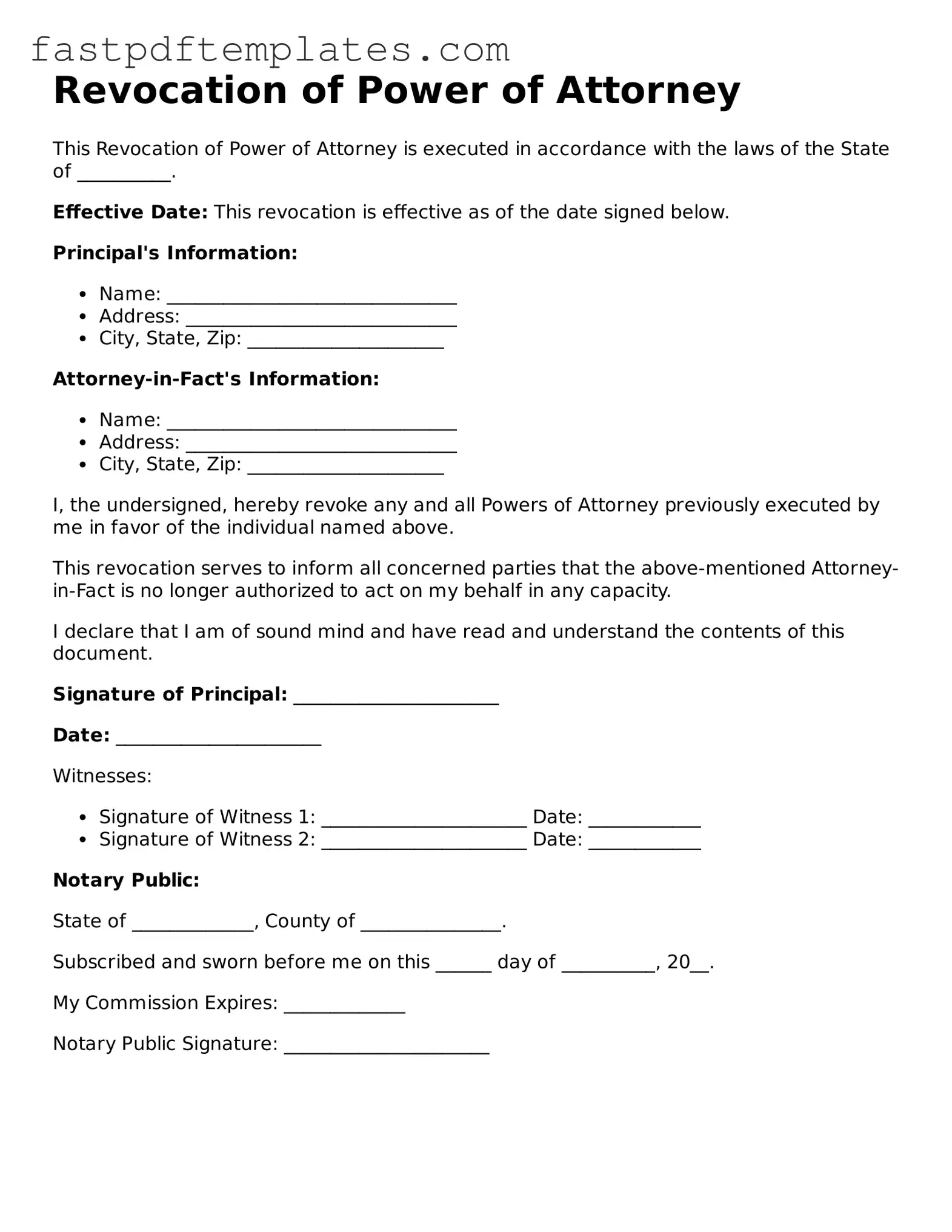Revocation of Power of Attorney
This Revocation of Power of Attorney is executed in accordance with the laws of the State of __________.
Effective Date: This revocation is effective as of the date signed below.
Principal's Information:
- Name: _______________________________
- Address: _____________________________
- City, State, Zip: _____________________
Attorney-in-Fact's Information:
- Name: _______________________________
- Address: _____________________________
- City, State, Zip: _____________________
I, the undersigned, hereby revoke any and all Powers of Attorney previously executed by me in favor of the individual named above.
This revocation serves to inform all concerned parties that the above-mentioned Attorney-in-Fact is no longer authorized to act on my behalf in any capacity.
I declare that I am of sound mind and have read and understand the contents of this document.
Signature of Principal: ______________________
Date: ______________________
Witnesses:
- Signature of Witness 1: ______________________ Date: ____________
- Signature of Witness 2: ______________________ Date: ____________
Notary Public:
State of _____________, County of _______________.
Subscribed and sworn before me on this ______ day of __________, 20__.
My Commission Expires: _____________
Notary Public Signature: ______________________
